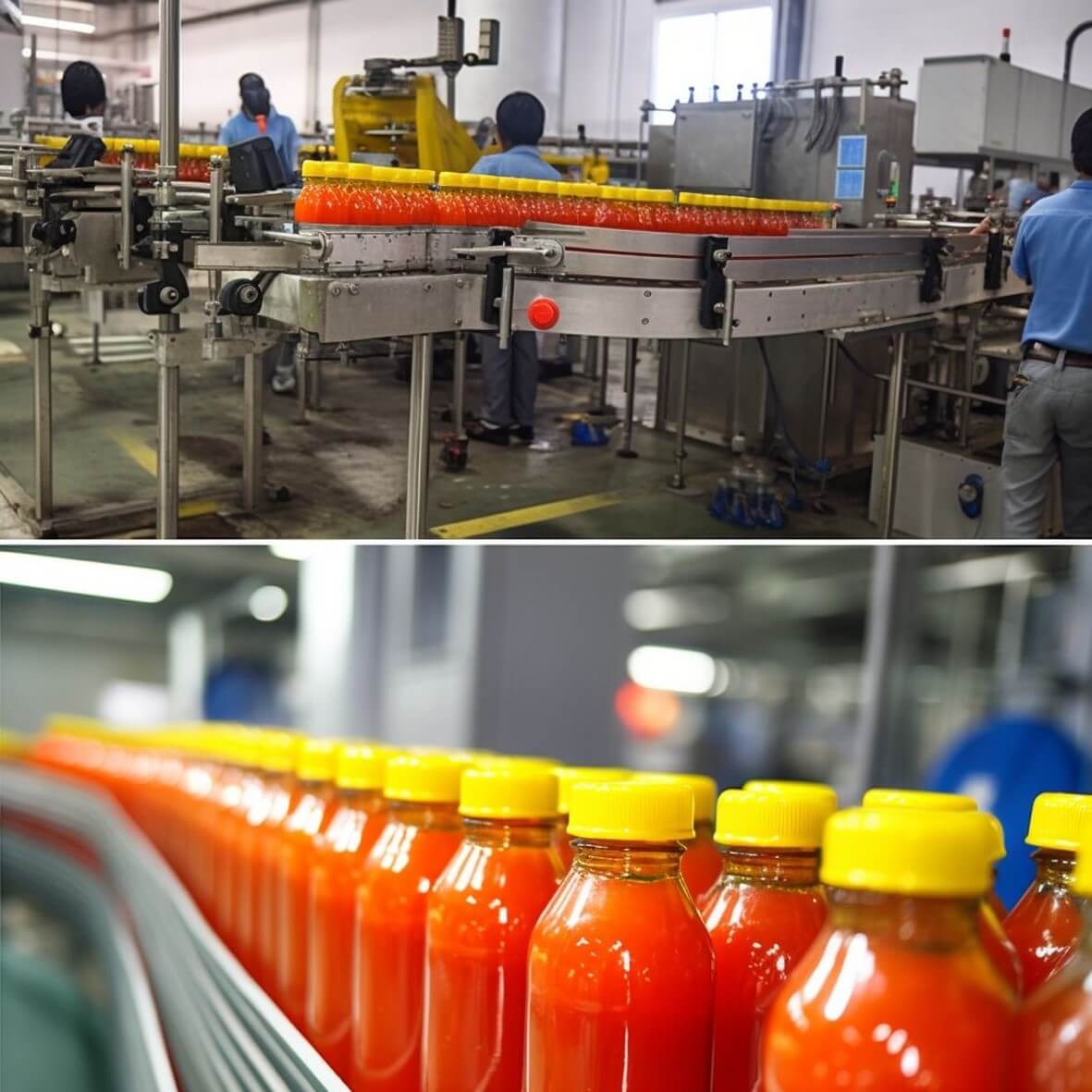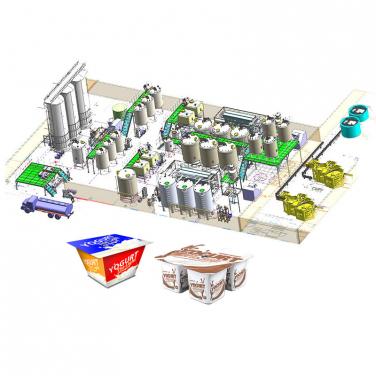
With the increasing global demand for tomato products, especially tomato sauce as a widely used basic seasoning, the design and construction of its production factories are receiving increasing attention. This article will delve into the key elements and technological innovations in the design and construction process of tomato sauce factories.
1. Market demand analysis: Firstly, a detailed market demand survey should be conducted before design to understand the consumption habits, taste preferences, and future development trends of the target market, providing decision-making basis for the factory's production capacity scale and product positioning.
2. Geographical location selection: The ideal tomato sauce factory should be located close to the tomato production area to ensure the freshness of raw materials and supply stability, while considering factors such as transportation convenience, environmental conditions, and related supporting facilities (such as water and electricity supply).
1. Raw material pretreatment area: including tomato cleaning, selection, crushing, and other processes. The use of automated equipment can improve efficiency and ensure product quality. Some advanced factories will also use optical sorting systems to accurately remove defective products.
2. Processing core area: mainly includes steps such as pulping, concentration, blending, sterilization, etc. Among them, high-efficiency concentration equipment (such as vacuum concentrators) can reduce energy consumption and maintain the original color and flavor of tomato sauce; Sterilization technology needs to balance sterilization effectiveness and nutrient preservation.
3. Filling and packaging area: Adopting sterile filling technology and automated packaging assembly lines can improve production efficiency and ensure food safety. Flexible switching capability is required for various packaging forms such as bottled and bagged packaging.

3、Design and application advantages of automated tomato sauce production line
With the continuous advancement of modernization in the food industry, automated tomato sauce production lines have become an important tool for improving production efficiency, ensuring product quality, and food safety. This article will provide a detailed introduction to the design characteristics and significant advantages of automated tomato sauce production lines in practical applications.
1. Raw material pretreatment stage: Intelligent optical sorting machines are used to screen, clean, and peel tomatoes, ensuring consistency and purity of raw material quality. Some advanced devices can also automatically remove pests, diseases, or damaged parts.
2. Crushing and beating process: The high-speed crusher is used to precisely control the degree of tomato crushing, and then efficient centrifugal separation technology is used to remove seeds and fibers from the pulp, ensuring the delicate taste of tomato sauce.
3. Concentration process: Vacuum concentration technology maintains the original color and flavor of tomatoes while saving energy and reducing consumption, effectively reducing nutrient loss. The intelligent control system can monitor and accurately adjust parameters such as temperature and pressure in real time, ensuring stable concentration effect.
4. Seasoning and sterilization: The automated ingredient system accurately adds sugar, salt, spices and other auxiliary materials according to the formula, and ensures the product is sterile and safe to taste through advanced high-temperature short-term (UHT) sterilization technology.5. Filling and packaging: The fully enclosed sterile filling line can achieve fast and accurate quantitative filling, and is equipped with automated capping, labeling, and packaging equipment, greatly improving production efficiency and product appearance quality.
6. Data collection and analysis: Integrate industrial Internet of Things technology, collect data information from various links of the production line, form a full process traceability system, facilitate real-time monitoring of production status by enterprises, optimize production plans, and improve overall operational efficiency.
1. Production efficiency improvement: Automated production lines greatly shorten processing cycles, reduce manual errors, and significantly increase production per unit time.
2. Quality consistency guarantee: Through precise automation control methods, ensure that the various indicators of each batch of products, such as color, taste, nutritional content, etc., are highly consistent.
3. Resource conservation and environmental protection: Automated production lines focus on energy recovery and wastewater treatment, reducing waste and adhering to the concept of sustainable development.
4. Food safety management: Strict aseptic environment, high standard sterilization technology, and full process quality monitoring effectively ensure the food safety of tomato sauce products.
5. Flexible response to market demand: Automated production lines have good flexibility and scalability, and can quickly adjust production specifications and flavors according to market changes to meet diverse consumer needs.
In summary, automated tomato sauce production lines are an important achievement in the development of modern food industry. They not only promote technological innovation and industrial upgrading in the industry, but also bring significant economic benefits and social value to enterprises in practical applications.
1. Energy utilization optimization: Energy recycling is achieved through a heat recovery system, such as using the waste heat generated during the concentration process to preheat new tomatoes or for other production processes.
2. Wastewater treatment and discharge: Establish comprehensive wastewater treatment facilities, comply with environmental regulations, and scientifically treat production wastewater before discharge or recycling.
3. Green building concept: Integrating green building concepts into factory building design, such as using energy-saving building materials, reasonable layout to reduce energy consumption, and adding green areas to improve the microclimate environment in the factory area.
1. Intelligent control system: introduce advanced automatic control system and industrial Internet technology, monitor production data in real time, realize refined management of production process, and rapidly adjust production line parameters according to market feedback.
2. Big data and AI applications: Using big data analysis to predict raw material supply, optimizing production plans and resource allocation with artificial intelligence algorithms, and improving overall operational efficiency.
In summary, the design and construction of tomato sauce factories not only need to meet the requirements of production processes, but also need to pay attention to technological innovation in environmental protection, energy conservation, and intelligence, in order to build an efficient, safe, and sustainable modern tomato sauce production base.
Shanghai Beyond Machinery Co., Ltd
Beyond Machinery specializes in the design and manufacturing of tomato sauce production line. Please contact us now, and our professional technical engineers will customize the equipment plan for tomato sauce production line and provide a quotation. Please contact us now to obtain the latest equipment plan and quotation.



